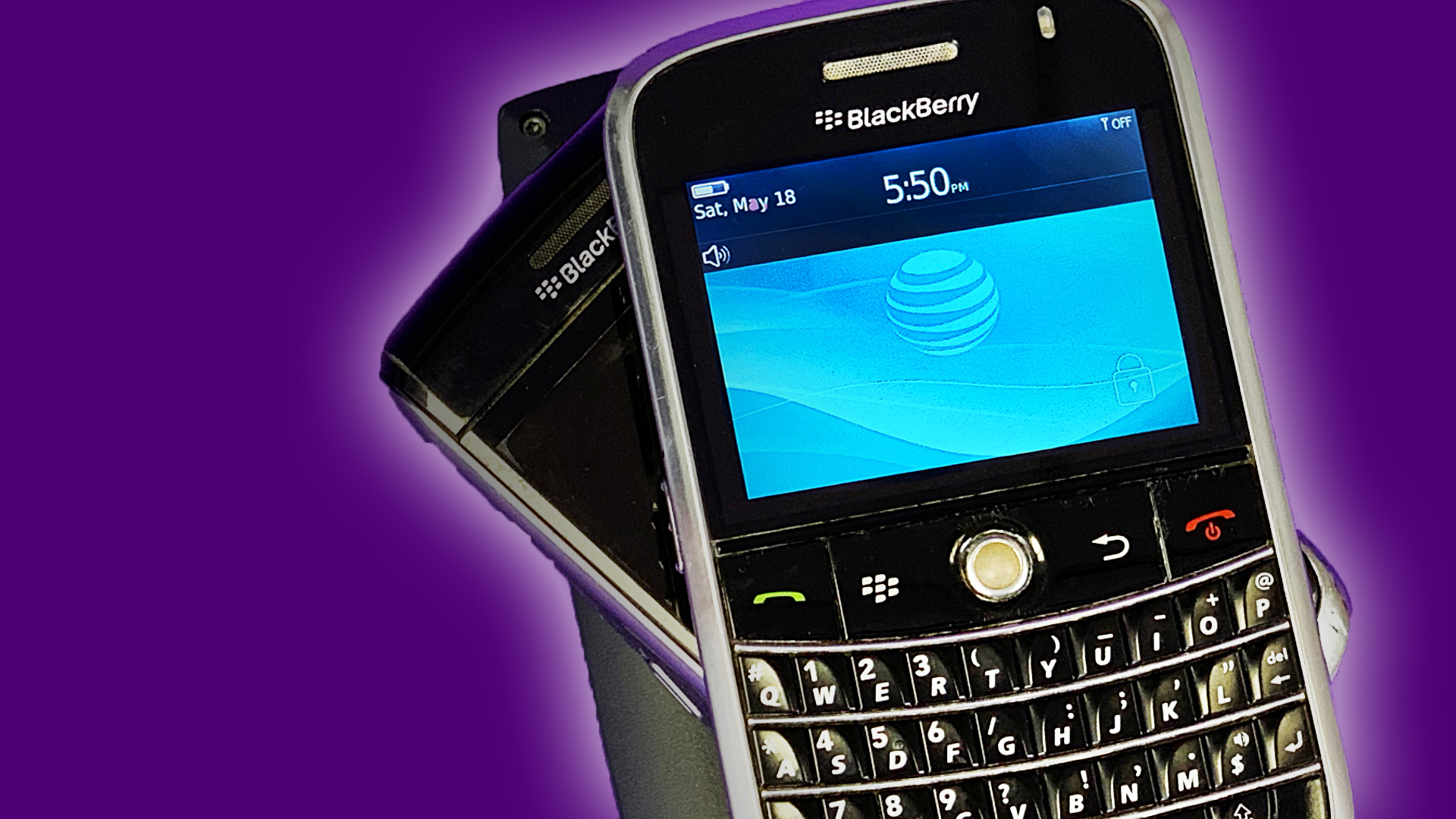- BlackBerry controlled 50% of the smartphone market in the US and 20% globally at one time.
- Despite being one of the first smartphones, it failed to innovate and became complacent in how the smartphone market was changing.
- There was an updated iPhone every year, and other smartphones, like the Motorola Droid, began to hit shelves, while BlackBerry struggled to add new features that appealed to consumers.
Following is a transcript of the video.
BlackBerry once reigned as king of the smartphone, selling more than 50 million units at its peak in 2011. The Canadian telecom company was originally named Research in Motion and had tens of millions of customers. It started out creating pagers and handsets, but the first iteration of the smartphone, complete with iconic keyboard, took shape within its first 15 years.
At one time, BlackBerry controlled 50% of the smartphone market in the US and 20% globally. In the mid-aughts, BlackBerry phones were everywhere. But demand rapidly declined, and in 2016, BlackBerry stopped manufacturing its own phones. So, what happened?
In 1984, two Canadian engineering students, Mike Lazaridis and Douglas Fregin, formed Research in Motion. At first, the company dabbled mostly in random projects: an LED system for GM, a local network for IBM, and even a film-editing system that won an Oscar in 1998. In 1989, the Canadian phone company Rogers contracted RIM to work on its Mobitex network, a system specifically designed for messaging, giving RIM a leg up as an early expert in mobile messaging. Fast-forward to 1996, when RIM created its first two-way pager. And for the next few years, the company iterated on that design, gradually adding features like a color display, WiFi, instant messaging, and web browsing. In 2002, the company unveiled its first model that could be called a phone. In 2006, RIM added the trackball so users could scroll around the screen.
Avery Hartmans: BlackBerry figured out a way to make its phone indispensable to the wealthy and powerful. And having it really meant something about who you were as a person; it was a status symbol. And that's where we got that name CrackBerry. People were almost addicted to it and addicted to that feeling of always being connected.
Narrator: The BlackBerry had a simple design, an easy learning curve, and was clearly marketed to business professionals. The full keyboard made it possible for them to work outside the office. They could respond to emails, texts, browse the web, basically anything they might need to do at a computer. And there was one other beloved feature: BlackBerry Messenger.
Hartmans: The BBM messaging service was a key component of BlackBerry's success as well because they figured out really early on that people wanted to have an instant connection to people; they want to be able to message back and forth without limits. And being able to BBM also added you to that really exclusive club of BlackBerry-only users.
Narrator: This convenience, paired with inclusivity, paid off. By 2007, the company was pulling in more than $3 billion in revenue with a net income of $631 million.
Hartmans: At that point in time, BlackBerry had all these government contracts and big business deals, and those deals in turn spurred more consumer adoption. So at that point, BlackBerry was just dominating the US market.
Narrator: So, with all those contracts and dollar signs, the company had nothing to worry about, right? Steve Jobs: The problem with them is really sort of in the bottom 40 there. It's this stuff right here. They all have these keyboards that are there, whether you need them or not to be there. What we're gonna do is get rid of all these buttons and just make a giant screen. A giant screen.
Hartmans: The iPhone was something consumers had never seen before. The iPhone was a full-touch-screen device, and that was a huge leap in innovation at that point for the mobile industry. BlackBerry was still using physical keyboards at that point.
Narrator: But the iPhone didn't kill RIM immediately. It just signed its death warrant. BlackBerry didn't view the iPhone as competition since it didn't cater to the business market. So it carried on, business as usual. RIM released the BlackBerry flip phone in 2008, quickly followed by the BlackBerry Storm, its first touch-screen device. The Storm was reviewed and trashed by critics, who said it was "a definite letdown because of the phone's sluggish performance and bugginess." But BlackBerry phones still continued to sell for a few reasons. The iPhone was more expensive than the BlackBerry and exclusive to AT&T until 2011, forcing customers in the US to either switch providers or pick a new phone. And, very simply, people just didn't wanna give up their keyboards.
So, for a while, BlackBerry was fine. But RIM underestimated how quickly the smartphone market was changing. There was a new updated iPhone every year, and other smartphones, like the Motorola Droid, began to hit shelves. RIM tried to keep up. It rolled out innovative new devices, like the PlayBook tablet and Torch, but the devices were not well received. The PlayBook even shipped without an email app, which made it useless to BlackBerry's business-minded customer base. In June 2010 came BlackBerry's death rattle with the release of the iPhone 4. Soon after its release, Apple's phone sales surpassed BlackBerry for the second time. But this time, they stayed there.
Hartmans: BlackBerry was slow to change. Its company ethos was built around designing a great product that just worked and iterating on it very slowly. To that end, they would add small features over time, but they weren't shooting for big, sweeping changes that would shock and delight consumers.
Narrator: It wasn't the fact that there was no well-established BlackBerry app store, although that was big.
Comparatively, Android and Apple were more top of mind for app developers. BlackBerry wasn't. The phones missed out on a bunch of features that appealed to consumers, like front and back cameras. These shortcomings ultimately led to RIM's downfall. RIM's global market share began a downward spiral, going from 20% in 2009 to less than 5% in 2012. By the time RIM finally released its spec-competitive touch-screen phone in 2013, it was just too late.
That same year, RIM officially changed its name to BlackBerry. BlackBerry thought its loyal customers would wait around for it. Spoiler: They didn't. At this point, people were locked into either iPhone or Android. And in the last quarter of 2016, out of more than 432 million smartphones sold worldwide, only 207,900 were BlackBerry devices, which officially made RIM's smartphone market share 0%. And in 2016, Chinese consumer-electronic company TCL essentially bought the BlackBerry phone brand, which led to their departure from the smartphone market, 14 years after the release of its first phone. But the phones live on, sort of.
Commercial: Introducing the new BlackBerry Classic with more power and control than ever before.
Narrator: The deal was for TCL to design and manufacture BlackBerry hardware while the BlackBerry company provides the software. Today's BlackBerry phones still have the iconic keyboard but run on Android, not the BlackBerry OS, giving users their beloved app store and much more customization options. The phones are still marketed to a specific type of user, people who want enhanced privacy and security features, with the marketing materials spotlighting the phone's security protections and battery life. But the latest BlackBerry phone, the Key2, was released in 2018. These days, a new model comes along every year, and 2019 has come and gone without any new BlackBerrys. Whether we see a new BlackBerry anytime soon or not, the phones will always be a brick in the foundation of smartphone history. A fitting place for a company so set in its ways that it cemented its own demise.

